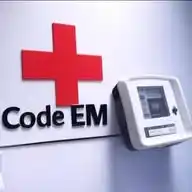
Code EM - Emergency Medicine Education / Medical Update
February 20, 2025 at 12:07 PM
Scientific Statement AHA: Management of Elevated Blood Pressure in Acute Care Settings
https://www.ahajournals.org/doi/10.1161/HYP.0000000000000238
*1. Background and Context*
- Elevated blood pressure (BP) affects up to 72% of hospital admissions.
- Hypertensive emergencies require immediate treatment with intravenous (IV) antihypertensives.
- Asymptomatic elevated BP is common, but treatment risks and benefits are unclear.
*2. Definitions*
- *Hypertensive Emergency*: BP >180/110–120 mmHg with acute target-organ damage.
- *Asymptomatic Markedly Elevated BP*: BP >180/110–120 mmHg without target-organ damage.
- *Asymptomatic Elevated BP*: BP ≥130/80 mmHg without target-organ damage.
*3. Epidemiology*
- Hypertensive emergencies account for 2 in 1,000 adult ED visits.
- Asymptomatic elevated BP affects 50–72% of hospitalizations, with higher prevalence in older adults, Black individuals, and those with comorbidities.
*4. BP Measurement in Acute Care*
- BP measurement is often inconsistent and prone to errors.
- Arterial lines are preferred for hypertensive emergencies.
*5. Management of Elevated BP*
- *Hypertensive Emergency*: Treat with IV antihypertensives to reduce BP by 20–25% within the first hour.
- *Asymptomatic Elevated BP*: Treatment is less clear; avoid aggressive treatment, especially with IV medications.
*6. Evidence Gaps and Research Priorities*
- No randomized trials on treating asymptomatic elevated BP in acute care settings.
- Future research should focus on defining optimal BP targets, improving BP measurement practices, and evaluating treatment benefits and risks.
*7. Transitions of Care*
- Focus on restarting home antihypertensive medications, scheduling timely follow-up, and avoiding unnecessary intensification of antihypertensive regimens.
*8. Health Equity Considerations*
- Disparities in hypertension management persist, particularly among underinsured, low-income, and minority populations.
*9. Key Clinical Implications*
- Use proper BP measurement techniques and calibrated devices.
- Avoid unnecessary treatment of asymptomatic elevated BP.
- Focus on addressing reversible causes of elevated BP.
Conclusion
The management of asymptomatic elevated BP in acute care settings should be cautious and patient-centered. Overtreatment may lead to harm. Future research is needed to clarify optimal treatment strategies and BP targets.
https://youtu.be/kJ-bRaV00XU?si=Yw3cmqTuugh-OJP7
👍
1